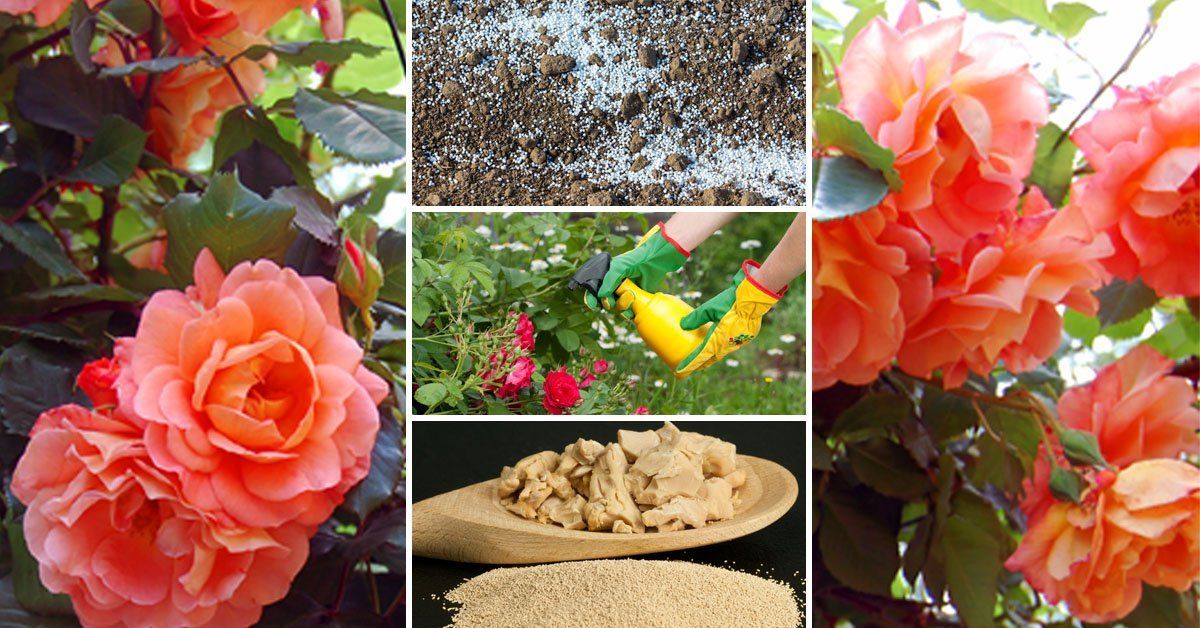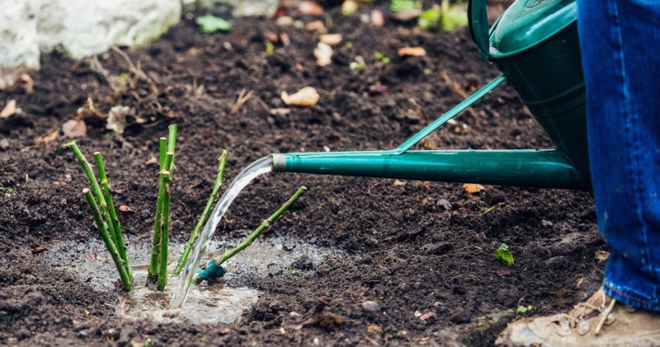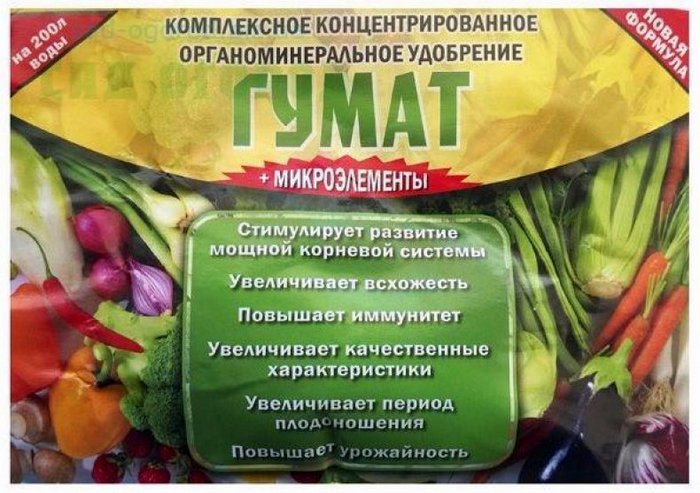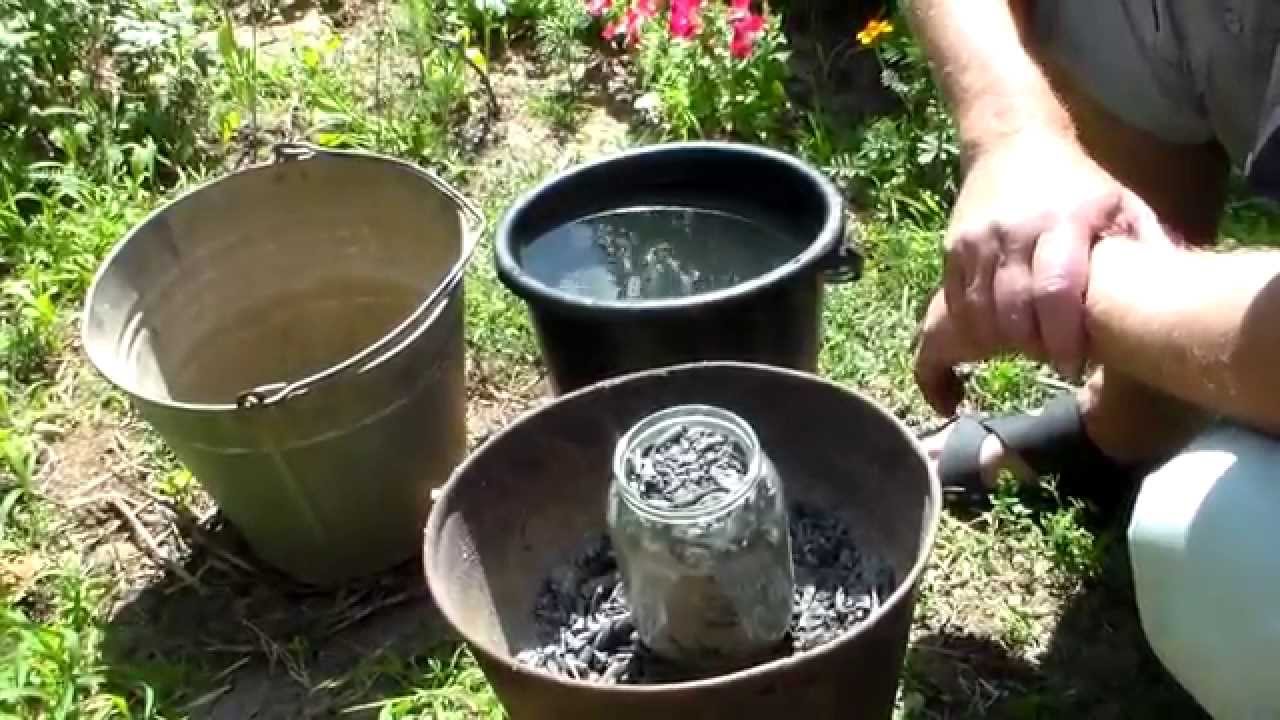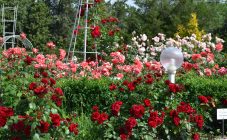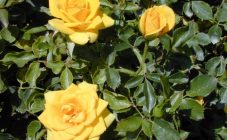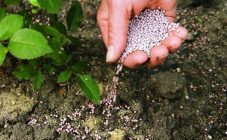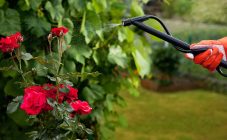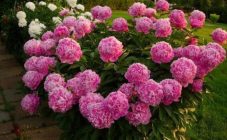Content:
Depending on the variety, roses can be more or less demanding to care for. However, there are general rules that should be followed in order for the plant to delight the eyes with its spectacular appearance for a long time.
General rules for caring for roses
Landing
Choosing the right place for planting is the key to the good condition of the plant. It should be level, with good air circulation, but no drafts. It is best to plant roses on a sunny side, shading them slightly to protect them from direct sunlight. These plants prefer acidified soil, the pH level of which is 5-8 units. It should not be too wet or too dry.
A layer of humus must be poured into the planting hole. It is mixed with a universal soil, to which 20-25 g of superphosphate and 15-20 g of potassium salt are added, so that the plant takes root better.
It is best to plant roses in spring, when the soil warms up to + 10-15 ° C. Neighboring bushes should be located at a distance of 1.5-2 m from each other. For ground cover and shrub plants prone to occupation, this distance should be increased.
Watering
For irrigation, it is worth using not too cold rain or settled water. Roses are watered as the topsoil dries, usually once a week. During the spring and dry summer months, you can do this more often - up to three times a week. In rainy periods, when there is enough moisture, and in autumn, when the rose is preparing for winter, you do not need to water.
Wintering
In order for roses to successfully endure the cold, they should be covered for the winter. This is done in mid-October - early November, after the onset of stable frosts from −5 to −7 ° С.
Climbing varieties for the winter are removed from the support, tied and placed on spruce branches. Cover the top with the same spruce branches or non-woven material. Shrub roses are wrapped in burlap and tied with twine. Roses on the stem are carefully dug in at the roots, bent to the ground and tied to the support, leaving a space between the rose and the ground surface. Then they also cover.
To avoid freezing of the roots, a mound should be made around the bush with a height of 20-30 cm.
Pruning
Roses are cut, as a rule, in the spring, after removing the shelter, and when planting. Preplant pruning is needed for better survival of the rose, spring pruning in order to remove frozen and damaged branches. In the process, they also get rid of the branches growing inside the bush. How much pruning is done depends on the type of rose and its ability to regenerate.
Top dressing
Without exception, all rose varieties must be fertilized several times throughout the year, but not more than 2 times a month. This process is important for the proper development of the plant and has its own nuances.
Why fertilize roses
Regular feeding is very important to keep the roses full of nutrients. The right top dressing not only helps the roses survive the winter and prevents disease, but can also prolong the flowering period. The rose must be fertilized at least twice a year:
- in the spring, at the beginning of the growth phase, immediately after removing the shelter;
- in summer, at the end of the first flowering.
During the period of bud formation, intermediate feeding can be carried out.
Feeding methods
There are 2 ways to feed:
- foliar;
- root.
With the foliar method, nutrition is introduced in liquid form directly through the foliage or into the stem. The advantage of such feeding is that the components enter the plant faster than through the roots.
However, the root method is the most common, as it allows you to apply fertilizers in both liquid and solid form.
Types of nutrients
Nutrients for feeding roses are divided into micro and macro elements. Without macronutrients, the existence of a rose is impossible, it deforms and eventually dies. For normal development, roses need:
- Nitrogen. Important for the health of the green parts of the plant. With enough of it, the plant has strong bright shoots and lush foliage.
- Phosphorus. Responsible for the formation of flowers and their number on the stem.
- Potassium. Promotes the successful absorption of phosphorus.
- Calcium. Forms the root system.
- Magnesium. Participates in the formation of chlorophyll.
Trace elements also play an important role. These include iron, zinc, manganese, copper. They help to improve the metabolism of the plant, as well as increase its flowering and fruiting period. However, their number is not large in comparison with macronutrients.
Fertilizers
You can feed roses with organic or mineral fertilizers. Mineral dressing is sold in stores in the form of granules, powders, tablets, or ready-made liquid solution. When choosing this type of feeding, you should definitely pay attention to the fact that all the necessary elements are present in the composition, and carefully follow the instructions. Organic and mineral nutrition must be combined with each other. You should not be limited to just one type.
How to feed roses for lush flowering in the garden in July and August: preparations, folk remedies
There are many options for feeding roses in July. This month the buds are laid and the rose needs to be fed with potassium fertilizers and magnesium. To achieve abundant flowering, you can fertilize the plant by foliar and root methods. For this purpose, use:
- sodium humate;
- superphosphate;
- ammonium nitrate;
- potassium-magnesia.
Many rose growers use folk remedies: a solution based on horse manure, mullein or wood ash. Nettle infusion has also proven itself well.
Top dressing with manure
Manure and bird droppings are the most common organic fertilizers for roses, as they contain almost all the necessary macronutrients. The manure must be rotted.
To prepare a liquid solution, you need
- in a large container of water, for example a barrel, add several buckets of manure or droppings;
- let it brew for about 2 weeks;
- dilute the finished infusion with water at the rate of 1 liter of solution per 10 liters of water.
The solution can be used in its pure form or added to it with mineral dressing.
Ash feeding
Wood ash is a source of potassium, phosphorus and calcium. Suitable for both root and foliar feeding. Ash solution for root feeding is used at a concentration of 100 grams. 10 liters of water, with foliar - 200 gr. 10 liters.It must be constantly stirred so that the phosphorus does not settle at the bottom of the container.
Top dressing with nettles
Nettle contains potassium, calcium, magnesium and vitamins that are essential for roses. To prepare an infusion from this plant, you should:
- chop young branches and leaves of nettle without seeds;
- pour the mixture into a container or barrel so that it fills 2/3 of the container;
- pour boiling water over and close the lid tightly;
- let it brew for 2 weeks, stirring daily.
The finished infusion darkens and stops foaming. For root feeding, a liter of infusion is diluted in 10 liters of water, for foliar feeding - in 20 liters.
In August, they begin to prepare the rose for winter. During this period, the plant needs potassium and phosphorus. To help roses restore strength after flowering, use complex mineral fertilizers, for example, Kristallin or Kemira-wagon in the amount of 1 tbsp. l. 10 liters of water. As an organic feeding, bird droppings, compost or nettle infusion are used, which are applied in liquid form.
Features of feeding roses in July in the Middle lane
At the end of July, foliar dressing of roses is especially effective in the climate of the middle zone, since in this way nutrients reach the plants even in low light and insufficiently high soil temperature. It is carried out using a spray bottle in cloudy weather, usually in the evening. Under these conditions, the nutrient solution will not evaporate in the sun and will gradually be absorbed into the leaves. However, the drops must have time to be absorbed before nightfall in order to exclude fungal diseases. When signs of diseases or pests appear on the leaves, foliar feeding is not recommended. Also, you cannot feed the plants during flowering.
Roses are quite demanding plants, and caring for them takes time and effort. Regular feeding is especially important when growing roses. The correct selection of fertilizers will help roses stay healthy for a long time and bloom luxuriantly even in temperate climates.
